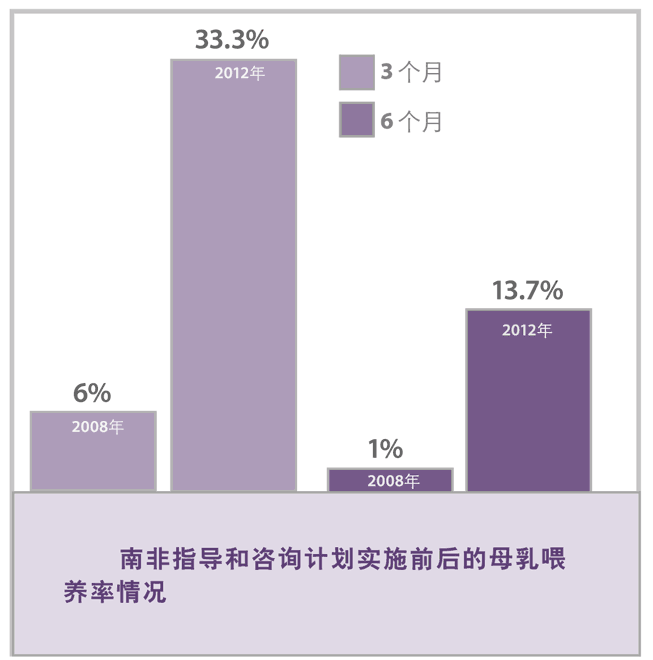Having IAEA training and support in acquiring equipment to use this technique made it possible for Coutsoudis and her team of health researchers to more accurately assess the impact of programmes designed to improve the poor exclusive breastfeeding rates, which were estimated to be 6 per cent at three months old and only 1 per cent at six months old, according to a 2008 study in KwaZulu-Natal.
“In 2012, we instituted a long term mentoring programme with new mothers who were simultaneously trained as breastfeeding counsellors. The deuterium dilution technique was used to validate reported breastfeeding practices. We were able to show that the mentoring and counselling programme had a big impact on improving exclusive breastfeeding rates,” said Coutsoudis. By the end of the programme, exclusive breastfeeding rates had improved significantly, to 33.3 per cent at three months and 13.7 per cent at six months.
The new mentorship and counselling programme has been so effective that Coutsoudis said there are mothers resisting the strong external pressure to introduce complementary foods too early.
Here are the accounts, as told by Coutsoudis, of Ms K and Ms C:
“Ms K said, ‘My friends came to visit me at my house and asked “what porridge are you feeding your baby as she is so fat and looks so good’. I replied: ‘I am not giving porridge, only breast milk.’
“Her friends did not believe her so they looked in her cupboard to see if she had any porridge and there was none. She proceeded to inform them very casually about how all mothers can produce a lot of milk to feed their babies on breast milk only in the first six months by feeding the baby often — every 2 to 3 hours when they are small.”
“Ms C said she went to the clinic for her immunization visit and the sister [nurse/healthcare worker] told her that her baby was too fat and she should stop breastfeeding, she told the sister she was only giving the baby breast milk and you can’t overfeed a breastfed baby so she was not going to feed her baby less.”



